
How to Use ESP32-2432S028: Examples, Pinouts, and Specs
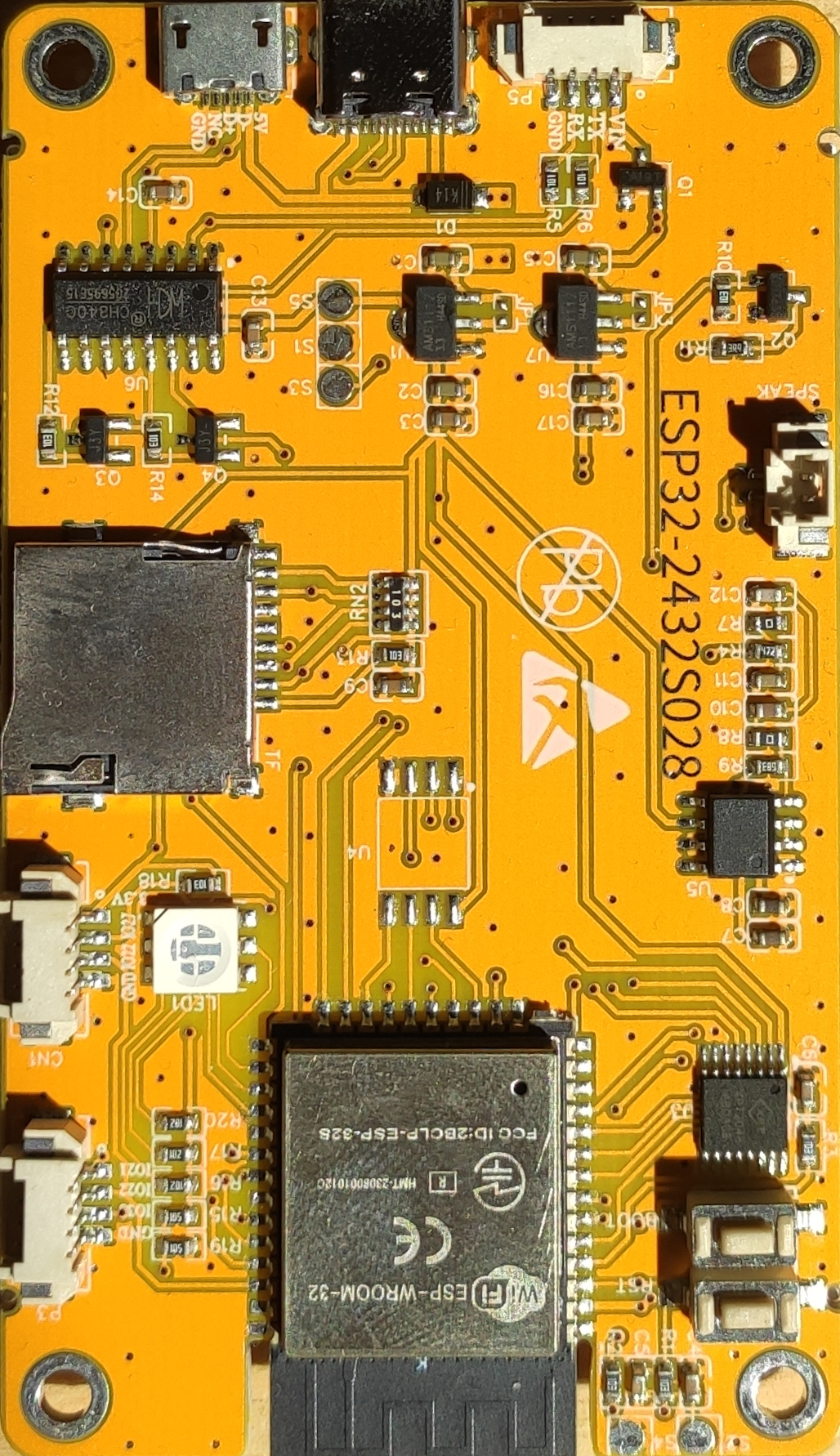
 Design with ESP32-2432S028 in Cirkit Designer
Design with ESP32-2432S028 in Cirkit DesignerIntroduction
The ESP32-2432S028 is a powerful microcontroller module that integrates Wi-Fi and Bluetooth capabilities, making it an ideal choice for Internet of Things (IoT) applications and embedded systems. It features a dual-core processor, enabling efficient multitasking and high-performance computing. This module is widely used in smart home devices, industrial automation, wearable electronics, and other wireless communication projects.
Explore Projects Built with ESP32-2432S028
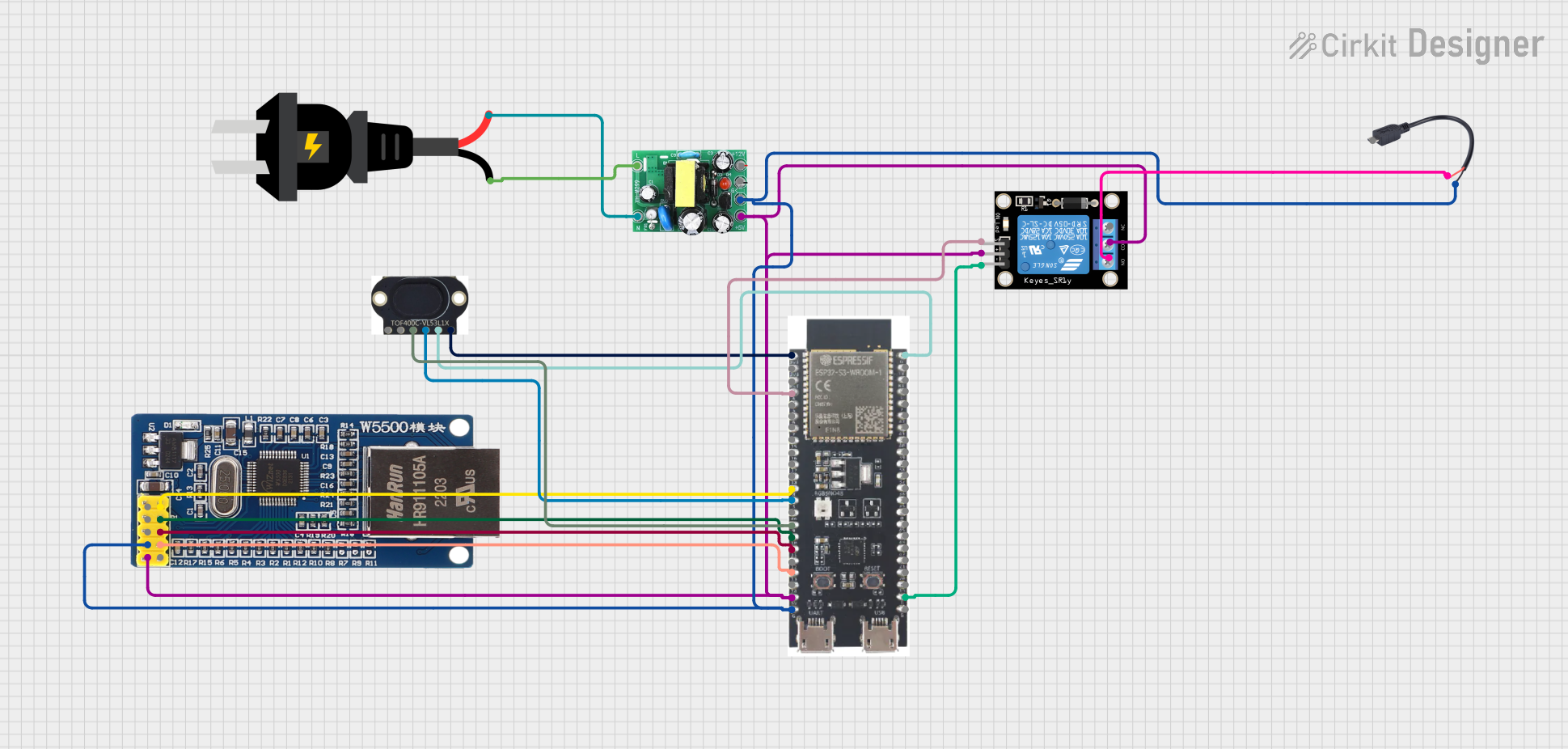
 Open Project in Cirkit Designer
Open Project in Cirkit Designer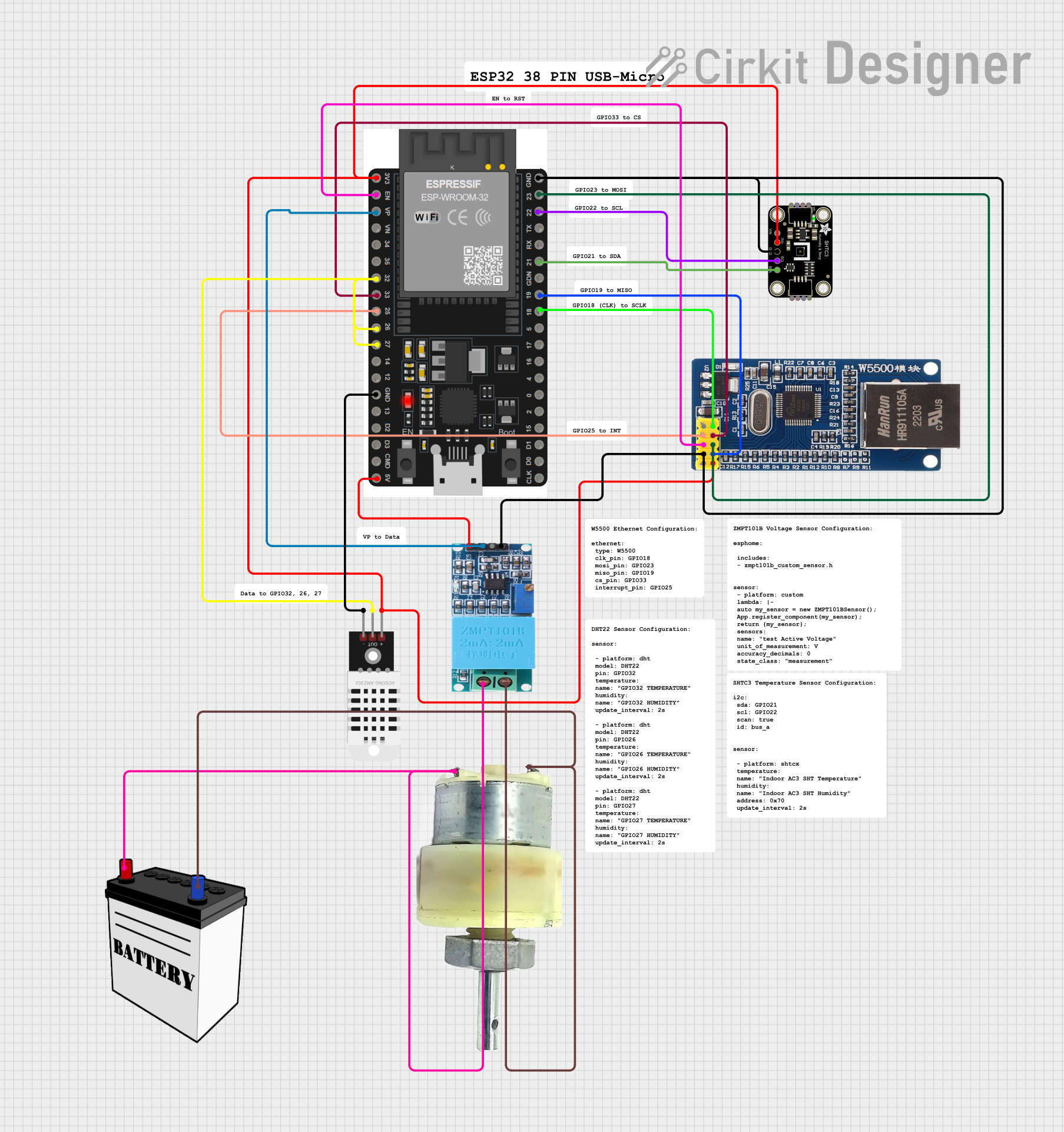
 Open Project in Cirkit Designer
Open Project in Cirkit Designer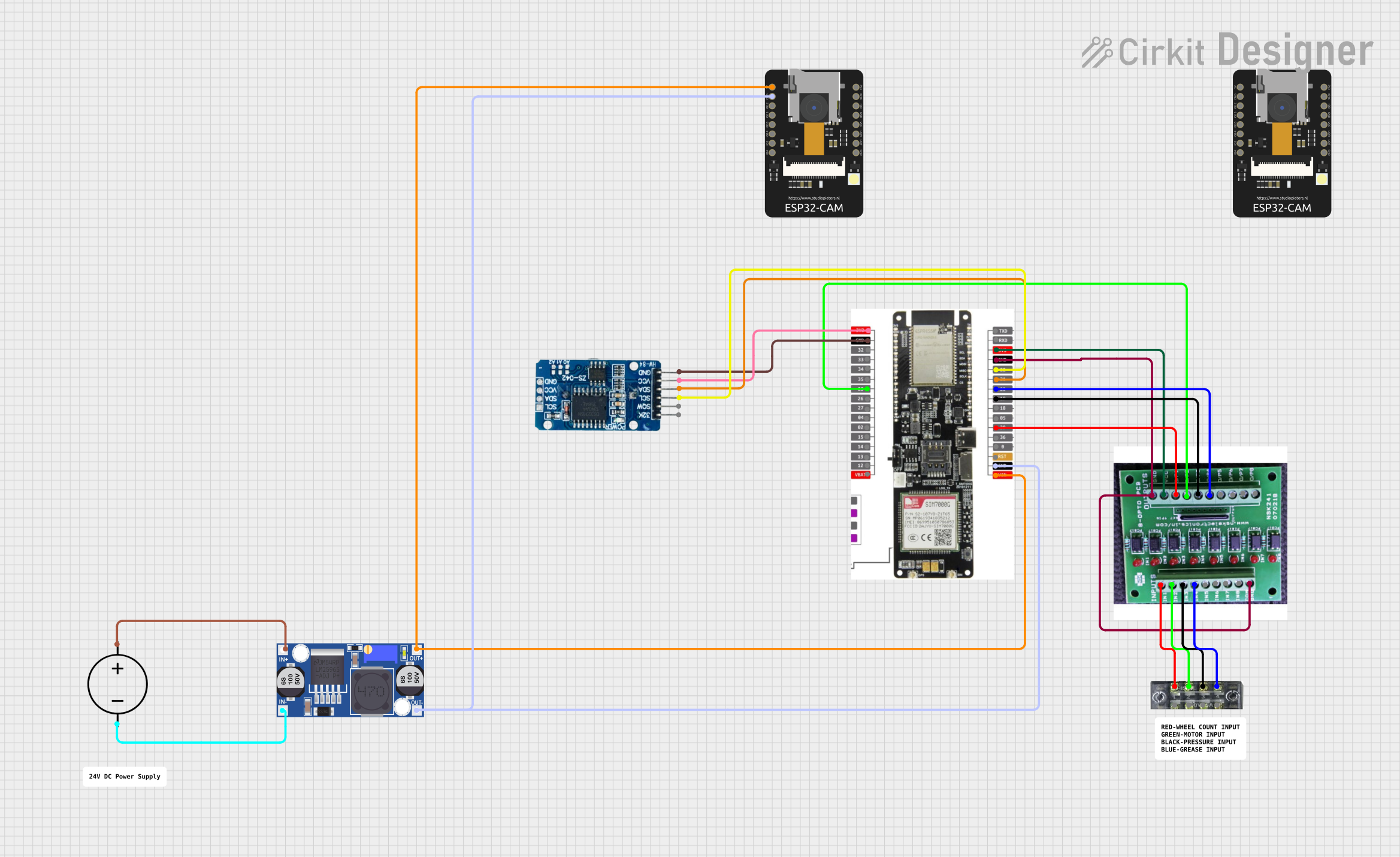
 Open Project in Cirkit Designer
Open Project in Cirkit Designer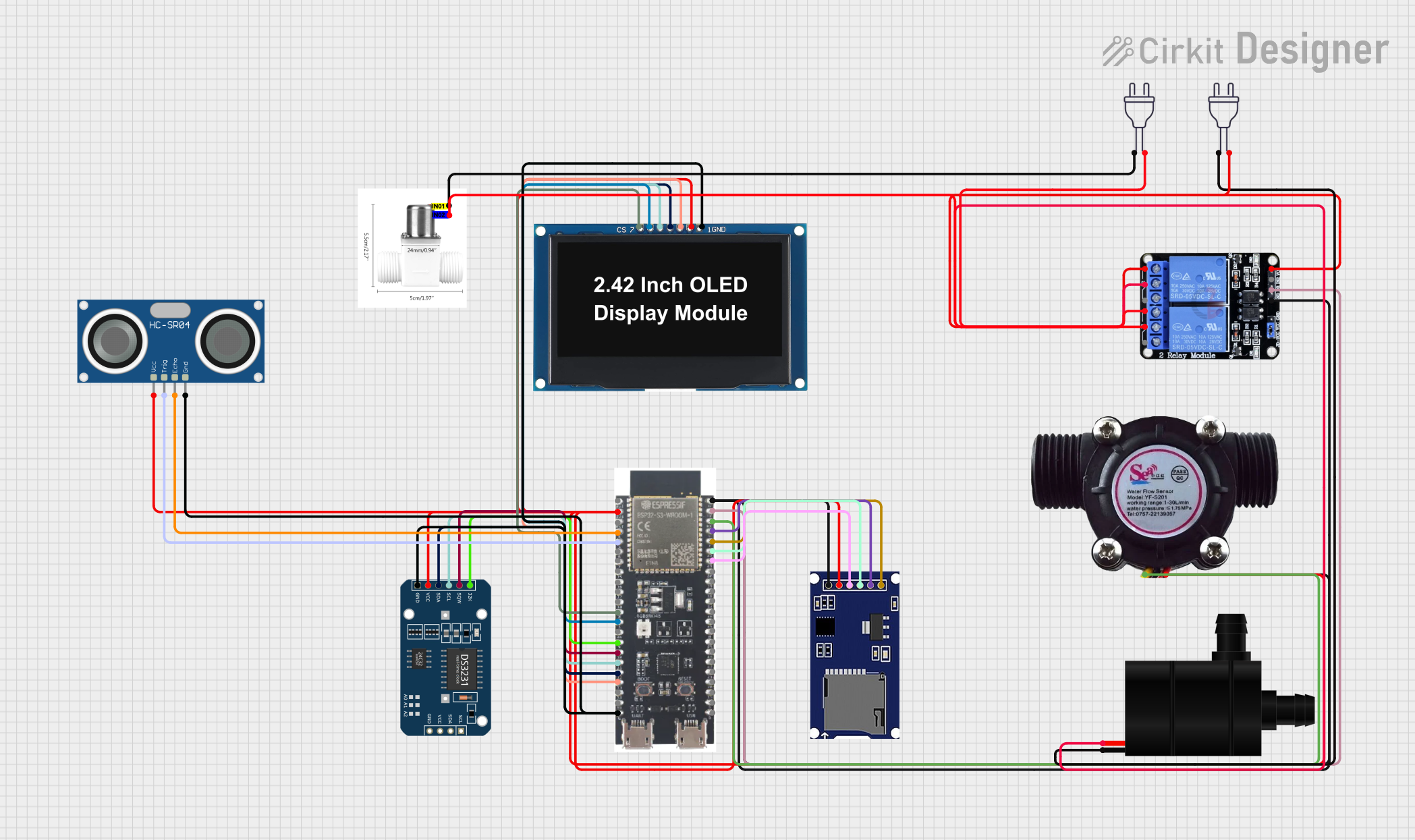
 Open Project in Cirkit Designer
Open Project in Cirkit DesignerExplore Projects Built with ESP32-2432S028

 Open Project in Cirkit Designer
Open Project in Cirkit Designer
 Open Project in Cirkit Designer
Open Project in Cirkit Designer
 Open Project in Cirkit Designer
Open Project in Cirkit Designer
 Open Project in Cirkit Designer
Open Project in Cirkit DesignerCommon Applications and Use Cases
- IoT devices and smart home automation
- Wireless sensor networks
- Wearable technology
- Industrial control systems
- Robotics and drones
- Real-time data monitoring and logging
Technical Specifications
The ESP32-2432S028 is designed to deliver robust performance while maintaining low power consumption. Below are its key technical details:
Key Technical Details
| Parameter | Specification |
|---|---|
| Processor | Dual-core Xtensa® 32-bit LX6 CPU |
| Clock Speed | Up to 240 MHz |
| Flash Memory | 4 MB |
| SRAM | 520 KB |
| Wireless Connectivity | Wi-Fi 802.11 b/g/n, Bluetooth v4.2 |
| Operating Voltage | 3.3V |
| GPIO Pins | 28 |
| Communication Interfaces | UART, SPI, I2C, I2S, PWM, ADC, DAC |
| ADC Resolution | 12-bit |
| Operating Temperature | -40°C to +85°C |
| Dimensions | 28 mm x 32 mm |
Pin Configuration and Descriptions
The ESP32-2432S028 module features a 28-pin layout. Below is the pin configuration:
| Pin Number | Pin Name | Function |
|---|---|---|
| 1 | GND | Ground |
| 2 | 3V3 | 3.3V Power Supply |
| 3 | EN | Enable Pin (Active High) |
| 4 | IO0 | GPIO0, Boot Mode Selection |
| 5 | IO1 | GPIO1, UART TX |
| 6 | IO2 | GPIO2, General Purpose I/O |
| 7 | IO3 | GPIO3, UART RX |
| 8 | IO4 | GPIO4, PWM Output |
| 9 | IO5 | GPIO5, SPI Clock (SCK) |
| 10 | IO12 | GPIO12, ADC Input |
| 11 | IO13 | GPIO13, SPI MOSI |
| 12 | IO14 | GPIO14, SPI MISO |
| 13 | IO15 | GPIO15, PWM Output |
| 14 | IO16 | GPIO16, I2C SDA |
| 15 | IO17 | GPIO17, I2C SCL |
| 16 | IO18 | GPIO18, SPI Clock |
| 17 | IO19 | GPIO19, General Purpose I/O |
| 18 | IO21 | GPIO21, I2C SDA |
| 19 | IO22 | GPIO22, I2C SCL |
| 20 | IO23 | GPIO23, SPI MOSI |
| 21 | IO25 | GPIO25, DAC Output |
| 22 | IO26 | GPIO26, DAC Output |
| 23 | IO27 | GPIO27, ADC Input |
| 24 | IO32 | GPIO32, ADC Input |
| 25 | IO33 | GPIO33, ADC Input |
| 26 | IO34 | GPIO34, ADC Input |
| 27 | IO35 | GPIO35, ADC Input |
| 28 | IO39 | GPIO39, ADC Input |
Usage Instructions
The ESP32-2432S028 is versatile and easy to use in a variety of applications. Below are the steps and best practices for using this module in a circuit.
How to Use the Component in a Circuit
- Power Supply: Connect the 3V3 pin to a 3.3V power source and the GND pin to ground.
- Programming: Use a USB-to-serial adapter to program the ESP32. Connect the adapter's TX pin to GPIO3 (RX) and RX pin to GPIO1 (TX).
- Boot Mode: To upload code, hold GPIO0 low while resetting the module.
- Peripherals: Connect sensors, actuators, or other peripherals to the GPIO pins as needed. Use appropriate pull-up or pull-down resistors for stable operation.
- Communication: Use UART, SPI, or I2C interfaces to communicate with other devices.
Important Considerations and Best Practices
- Ensure the power supply is stable and within the 3.3V range to avoid damaging the module.
- Use level shifters if interfacing with 5V logic devices.
- Avoid leaving unused GPIO pins floating; tie them to ground or VCC through resistors.
- Use decoupling capacitors near the power pins to reduce noise.
- For wireless applications, ensure the antenna area is free from obstructions for optimal signal strength.
Example Code for Arduino UNO
The ESP32-2432S028 can be programmed using the Arduino IDE. Below is an example of how to connect the module to Wi-Fi and print the IP address:
#include <WiFi.h> // Include the WiFi library for ESP32
const char* ssid = "Your_SSID"; // Replace with your Wi-Fi SSID
const char* password = "Your_Password"; // Replace with your Wi-Fi password
void setup() {
Serial.begin(115200); // Initialize serial communication at 115200 baud
delay(1000); // Wait for a second to stabilize
Serial.println("Connecting to Wi-Fi...");
WiFi.begin(ssid, password); // Start Wi-Fi connection
while (WiFi.status() != WL_CONNECTED) {
delay(500); // Wait for connection
Serial.print(".");
}
Serial.println("\nWi-Fi connected!");
Serial.print("IP Address: ");
Serial.println(WiFi.localIP()); // Print the assigned IP address
}
void loop() {
// Add your main code here
}
Troubleshooting and FAQs
Common Issues Users Might Face
Module Not Responding:
- Ensure the power supply is stable and within the 3.3V range.
- Check the connections, especially the TX and RX pins.
Wi-Fi Connection Fails:
- Verify the SSID and password are correct.
- Ensure the router is within range and not overloaded with devices.
Code Upload Fails:
- Ensure GPIO0 is held low during the reset for boot mode.
- Check the USB-to-serial adapter connections.
Unstable Operation:
- Add decoupling capacitors near the power pins.
- Avoid using long wires for high-frequency signals.
Solutions and Tips for Troubleshooting
- Use a multimeter to check voltage levels at the power pins.
- Update the ESP32 board package in the Arduino IDE to the latest version.
- Use a logic analyzer to debug communication issues on UART, SPI, or I2C lines.
- Refer to the ESP32 datasheet for detailed electrical characteristics and design guidelines.